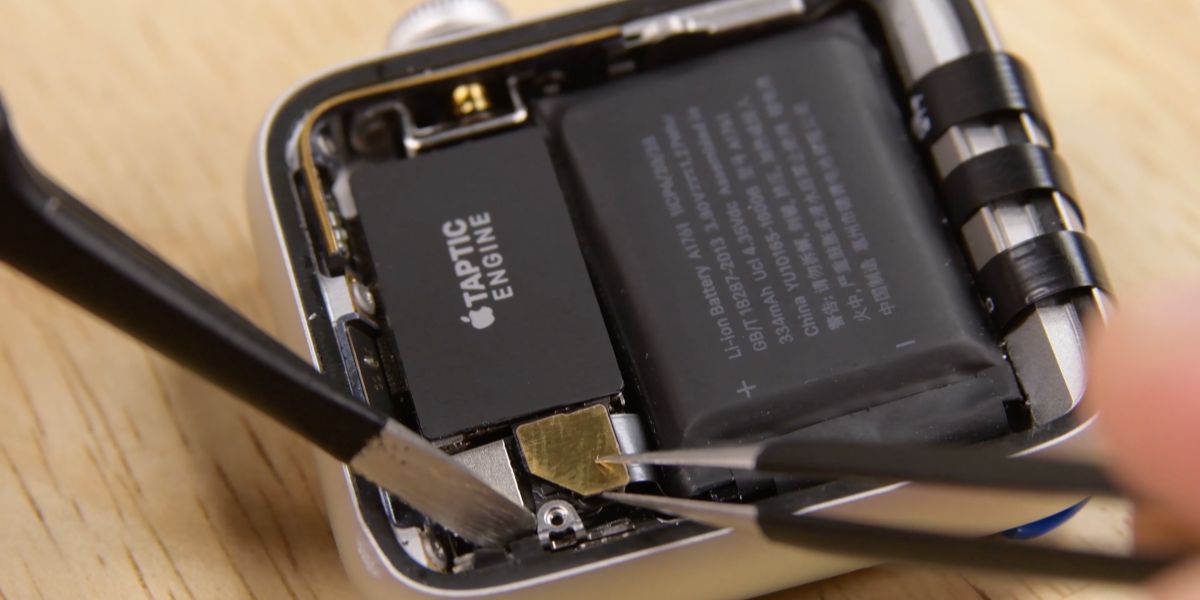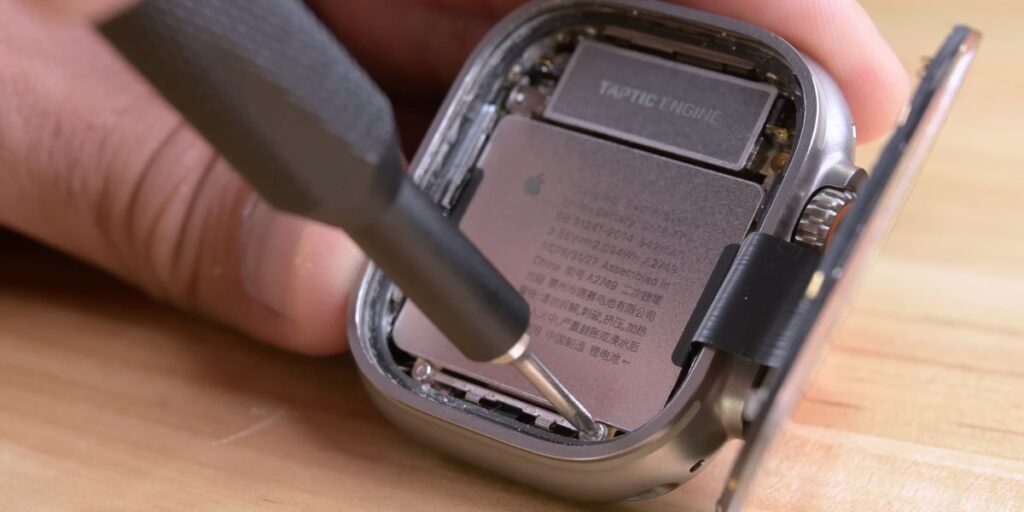Common Smartwatch Repairs: What Issues We Fix

Smartwatches are brilliant little helpers, but when they stop responding, it can feel like a part of your day has gone missing. In this guide, we’ll walk you through the most common problems we encounter, their typical causes, and which fixes are straightforward versus those that require professional assistance. If you’ve ever wondered why smartwatches stop working, this article will clarify the likely causes and provide sensible next steps.
1. Battery and Power Problems
One of the common reasons people bring watches in is plain power failure, either the watch won’t hold a charge, or it refuses to charge at all. A combination of worn-out cells, failing charging circuitry, and software issues can produce symptoms such as sudden shutdowns or a battery that hovers at a tiny percentage.
If your smartwatch battery is not charging, try these troubleshooting steps first: use the original charger, test a different USB port or power adaptor, and let the device charge undisturbed for at least 30 minutes. If the device shows no response after taking these steps, the cell or charging board may need to be replaced. Professional technicians can run diagnostics and replace batteries safely.
How Long Do Batteries Normally Last?
Batteries degrade with use. Expect a noticeable decline in capacity after 18–36 months, depending on usage patterns such as heavy GPS use or constant use of health-tracking features. When the runtime is reduced to half of its original value, replacement is often the most cost-effective option.
2. Charging Contacts and Connector Faults
Many “won’t charge” problems are not the battery at all, but dirty or corroded charging contacts. Sweat, dust, and grime build up where the watch meets the charger, especially on cheaper third-party straps or docks. Clean the metal contacts gently with a dry microfibre cloth or an alcohol swab, reseat the watch, and try again.
If the watch turns on after cleaning, you’ve saved time and money; if not, a deeper hardware fault may be present. For step-by-step contact cleaning and charging checks, follow trusted troubleshooting guidance before attempting more invasive fixes.
3. Touchscreen and Digitiser Failures
If you’ve noticed the smartwatch touch screen not working, the cause may be software (glitches, stuck apps) or hardware (damaged digitiser). Start with these quick steps: force-restart the watch, update its software through the companion phone app, and unpair, then repair the device if the touch problems continue.
If the display lights up, but touches are ignored or registers “ghost” taps, the digitiser (the touch layer) is likely damaged and needs component-level replacement. This repair usually involves replacing the whole display assembly. Authorised support or experienced repairers are best placed to replace delicate display components.
Software Vs Hardware
If the screen responds intermittently or only in certain places, that points to a hardware problem. If the entire interface freezes or stops after an app update, suspect the software and try a reset or software reinstallation first.
4. Smartwatch Display Problems
The visible screen can fail in ways other than touch: dead pixels, dim backlighting, or a blank display while the watch is otherwise powered on. Physical damage (drops, impact) and moisture under the glass are common causes. In many models, the display and touch layers are fused into one unit, so a cracked glass usually means the entire assembly must be replaced.
For complex display faults, a professional diagnostic helps determine if replacement parts or board-level repairs are required.
5. Water Damage and Moisture Intrusion
Although many watches are water-resistant, exposure beyond the rated limits or worn seals can let moisture in. Signs include condensation under the glass, erratic behaviour after a swim, or components that won’t power on.
Do not charge a wet device; it raises the risk of short circuits. Power it down, dry the exterior, and get it inspected. Water damage is often tricky: even if a watch appears to recover, corrosion can cause progressive failures. If you suspect moisture, professional cleaning and seal replacement are recommended.
6. Buttons, Straps, and Sensor Issues
Not all repairs are dramatic: button failures, broken straps, and sensor misreads (heart-rate or SpO2 giving odd values) are everyday jobs. Buttons may be cleaned or replaced; straps are usually inexpensive swaps; sensors sometimes need recalibration or a replacement part if damaged by impact or moisture.
When to Go for DIY or Professionals?

Some fixes you can try at home: a forced restart, cleaning charging contacts, using the official charger, and a software update. But if the problem involves opened cases, glued screens, liquid inside, or component replacement, it’s safer to consult a technician.
How Professionals Diagnose and Repair Smartwatches?
A good repair shop will run a clear process: visual inspection, bench testing (charging, sensor checks), software diagnostics, and then targeted repairs, battery swaps, screen/digitiser replacement, board-level fixes, or seal replacement after water ingress. Repairs should come with a short warranty and a clear parts breakdown.
If you need fast tech repair in York, Fone Tech York offers experienced technicians for wearable devices. We diagnose your issue instantly and quote affordable repair costs without any delays. Get in touch with us today!
FAQs
Q1: Why has my smartwatch suddenly stopped working?
Often a drained or failing battery, a software crash, or water ingress. Start with a charge and a restart; if that fails, seek diagnostics.
Q2: My watch displays a battery icon but won’t charge. What should I do now?
Try a different cable/adaptor, clean the charging contacts, and avoid third-party chargers. If it still won’t charge, the battery or charging board may need to be replaced.
Q3: The screen lights up but doesn’t respond to touch; can this be fixed?
If the display works, but the touch is dead, the digitiser is likely at fault and is often replaced with the screen. Start with software resets first.
Q4: My watch got wet and now it behaves strangely. Is water damage permanent?
Not always, but moisture can corrode internal parts. Power it down and get a professional to inspect it; early action improves the odds of repair.
Q5: Can I replace the battery myself?
Some models are user-serviceable; many are not. If the case is sealed or glued, professional replacement is safer and reduces the risk of further damage.
Q6: Do software updates cause displays or touch to stop working?
Updates can sometimes reveal pre-existing hardware issues or introduce bugs; a factory reset or reinstallation sometimes resolves software-related symptoms.
Q7: How much does a typical screen replacement cost?
Costs vary by brand and model; high-end watches with OLED assemblies are pricier. A shop will quote after diagnostic testing.
Q8: Is it worth repairing the watch, or should I replace it?
If the repair (battery or screen) costs significantly less than a new device and the watch meets your needs otherwise, repair is usually the sustainable choice.
Final Thoughts
Smartwatch problems range from simple, dirty contacts or a software hiccup to complex issues, such as digitiser damage or corrosion from water. Start with basic troubleshooting: clean contacts, use the original charger, update software, and restart. For anything involving sealed cases, glued screens, or suspected moisture, professional diagnostics are the safest route. If you need smartwatch repair in York, contact Fone Tech York. Our team tests your device, explains the options, and carries out repairs with care.


Leave a Reply